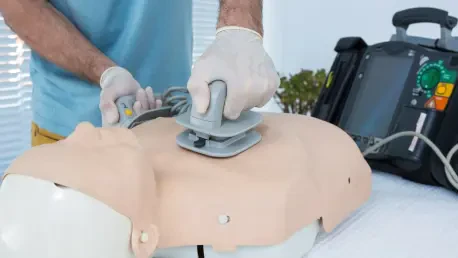The landscape of cardiac rhythm management has recently witnessed a groundbreaking development with FDA approval marking a significant milestone. Medtronic’s OmniaSecure defibrillation lead is now officially sanctioned for use in the right ventricle, promising enhanced outcomes for individuals with life-threatening heart conditions. This advance in medical technology is poised to benefit a diverse group of patients, including both adults and adolescents aged 12 and above. The OmniaSecure lead’s design is particularly notable for its size, being the smallest defibrillation lead available, measuring only 4.7 French, or 1.6 millimeters in diameter. This innovation underscores the medical community’s ongoing efforts to address complex cardiac challenges with solutions that are both effective and minimally invasive.
Key Innovations and Clinical Insights
The Promise of Physiological Pacing
Medtronic has been at the forefront of exploring new avenues in physiological pacing, particularly near the left bundle branch, to replicate the heart’s innate conduction pathways. Initial studies have demonstrated an impressive 100% success rate in defibrillation when the lead is situated in this specific location. Although the FDA has not yet authorized this particular application, these promising results highlight a significant stride toward more natural cardiac interventions. This approach is part of a broader industry movement to devise sophisticated devices that reduce the likelihood of complications such as venous occlusion or tricuspid valve regurgitation. By focusing on these advanced techniques, Medtronic is contributing to a paradigm shift in how cardiac rhythm disorders are managed, aiming to offer therapies that align more closely with the heart’s natural function.
Pivotal Studies and Global Trials
The successful outcomes of the LEADR Pivotal Trial have brought valuable insights into the effectiveness and safety of the OmniaSecure lead. This global trial has been instrumental in building confidence in the lead’s capability to deliver reliable cardiac rhythm management. Moreover, the non-randomized LEADR LBBAP study has provided further validation, particularly in illustrating high success rates when the lead is applied in the LBB area for patients requiring ICD or CRT-D therapy. These results emphasize the clinical potential of the OmniaSecure lead and its capacity to meet the demands of rigorous cardiac conditions with precision and reliability. Such studies are crucial in advancing industry standards and ensuring the widespread applicability of new medical technologies, ultimately enhancing patient outcomes and quality of life.
Advancing Cardiac Technology with Reliability
The Role of Medtronic’s Chief Medical Officer
Alan Cheng, holding the pivotal role of Medtronic’s chief medical officer in the cardiac rhythm management sector, has significantly emphasized the potential of this new defibrillation lead. His endorsement underscores the strong reliability of the lead, along with its capacity to minimize adverse complications. These attributes are central to Medtronic’s overarching strategy to advance transvenous solutions. By focusing on creating smaller and more resilient devices, Medtronic is demonstrating its commitment to pushing the boundaries of medical innovation. The approval of the OmniaSecure lead is a testament to these efforts, showcasing how cutting-edge design, coupled with rigorous research and testing, can result in medical devices that improve both patient safety and comfort.
Integrating Innovations Beyond Cardiology
Apart from cardiac rhythm management, Medtronic is actively involved in shaping the future of medical technology across various fields. The approval of the Simplera Sync sensor for integration with the MiniMed 780G system is a recent example, illustrating the company’s dedication to comprehensive healthcare development. This wireless sensor exemplifies how Medtronic is leveraging its expertise to enhance device functionality through seamless integration and user-friendliness. By aligning these initiatives, Medtronic not only fosters advancements in cardiac care but also contributes to broader healthcare improvements. This approach reflects a holistic view of patient care, where innovations in one domain can positively influence outcomes in others.
Future Directions and Considerations
Alan Cheng plays a crucial role as the chief medical officer for Medtronic’s cardiac rhythm management division, and he has highlighted the significant potential of a new defibrillation lead. His strong endorsement emphasizes not only the lead’s reliability but also its ability to reduce adverse complications, which aligns with Medtronic’s strategic focus on enhancing transvenous solutions. By prioritizing the development of smaller yet more durable devices, Medtronic shows its dedication to advancing the field of medical innovation. The recent approval of the OmniaSecure lead exemplifies this commitment, showcasing how groundbreaking design, comprehensive research, and thorough testing can lead to medical devices that enhance both patient safety and comfort. This advancement reflects Medtronic’s ongoing mission to improve healthcare outcomes with innovative technologies that are both effective and user-friendly, holding the potential to significantly impact patient care and treatment in the cardiac field.









